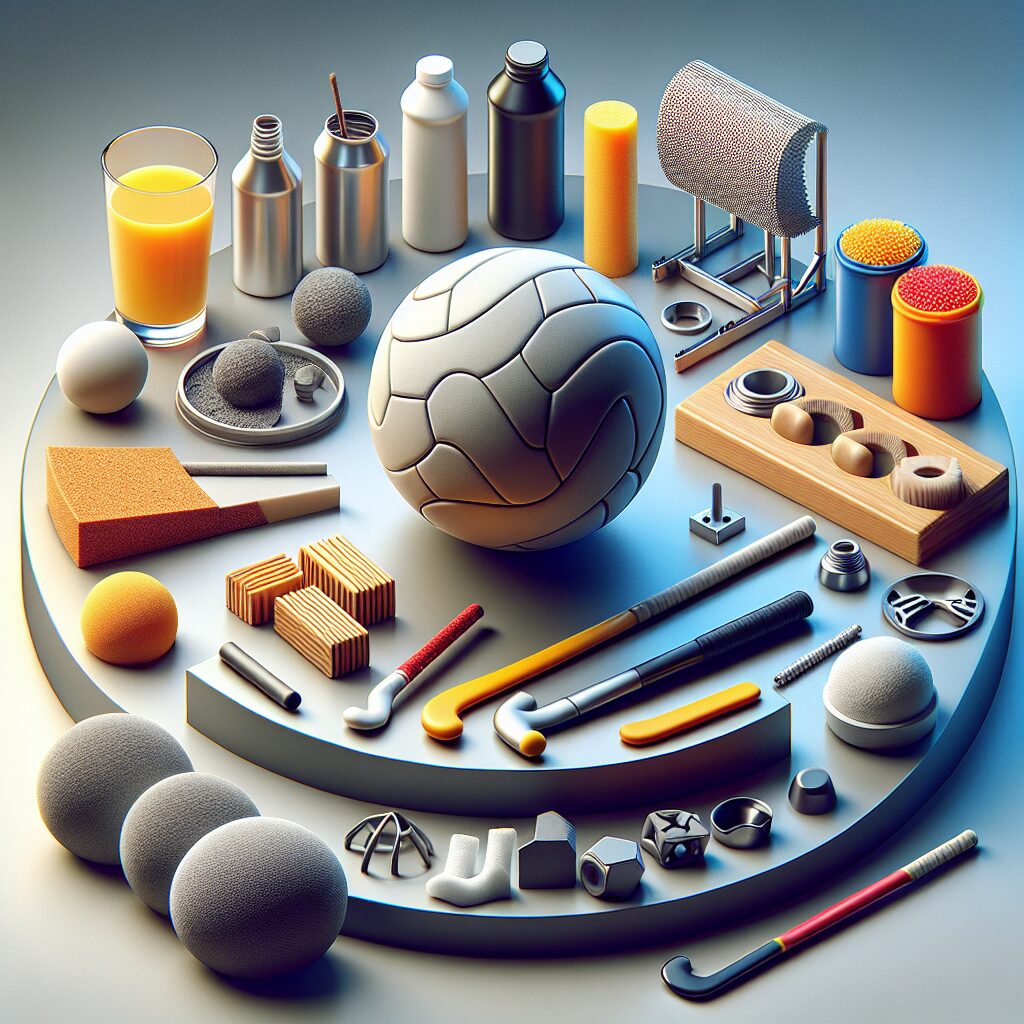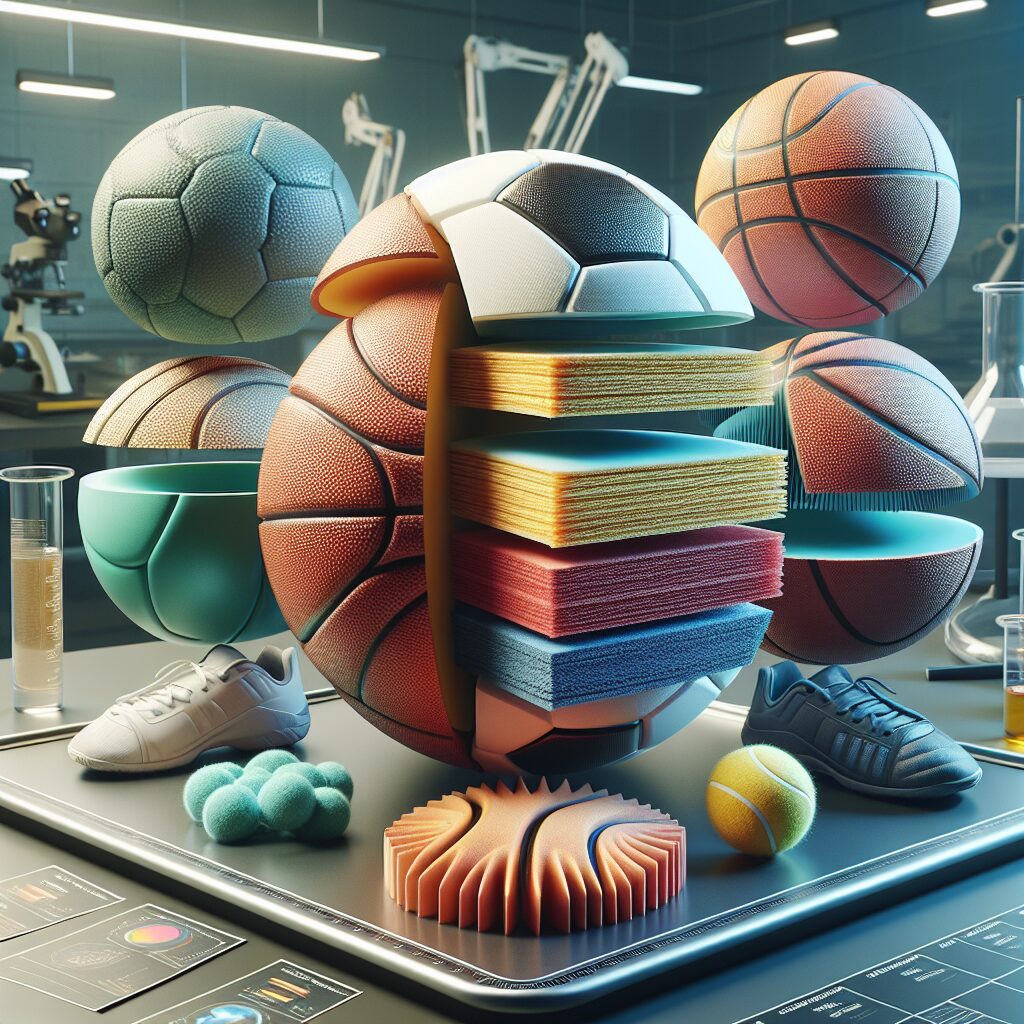Table tennis, also known as ping pong, is a popular indoor sport that requires precision, skill, and a sharp mind. At the heart of this fast-paced game lies an essential element – the table tennis ball. While it may seem like a simple sphere, the materials used to make these balls play a crucial role in the overall game experience. From the weight and bounce to the spin and durability, the choice of table tennis ball materials can greatly influence a player’s performance. In this article, we will delve deep into the different materials used in making table tennis balls, exploring their unique properties and discussing their impact on the game. So, let’s take a closer look and uncover the secrets behind the materials that shape the world of table tennis.
When it comes to table tennis balls, the materials used can vary, with each type offering distinct characteristics. The two main types of materials commonly employed are celluloid and plastic. Celluloid, a highly flammable compound, was historically the primary material used for table tennis balls. Known for its excellent bounce and ability to generate spin, celluloid balls became a staple in the world of table tennis. However, due to safety concerns and environmental considerations, plastic balls, made from materials like ABS or polyethylene, have gained popularity in recent years. These plastic balls provide a consistent bounce, better durability, and are not as flammable as celluloid. As we dive deeper into the table tennis ball materials, we will explore their unique impacts on gameplay and uncover which type may be the superior choice. Stay tuned for the key takeaways that will shed light on the world of table tennis ball materials and help you improve your game.
Key Takeaways
1. The material used to make table tennis balls is crucial for the game’s performance and player experience. The most common materials are celluloid and plastic, with plastic balls becoming more prevalent due to safety concerns and non-flammable characteristics.
2. The manufacturing process of table tennis balls involves shaping the material into a half-shell, joining the halves, and then adding a celluloid or plastic coating. The thickness and quality of the coating greatly affect the ball’s durability and bounce properties.
3. Celluloid balls were widely used until recent years, but as plastic balls are replacing them due to safety regulations, players have noticed some differences in gameplay. Plastic balls tend to have a slightly different bounce, spin, and sound compared to celluloid balls.
4. Several factors are considered when designing table tennis balls, including weight, size, roundness, and hardness. These characteristics impact the ball’s behavior during play, with variations in weight and size resulting in differences in speed and spin.
5. The International Table Tennis Federation (ITTF) has established strict regulations regarding the materials and specifications of table tennis balls for official competitions. These regulations aim to maintain consistency in gameplay and ensure fair competitions globally.
What are the Different Materials Used in Table Tennis Balls?
Table tennis, also known as ping pong, is an exciting and fast-paced sport played by millions of people worldwide. One of the essential components of this sport is the table tennis ball. While it may seem like a simple and insignificant object, the materials used in table tennis balls can have a significant impact on the game. In this article, we will take a deep dive into the various materials used in table tennis balls and explore their characteristics, advantages, and disadvantages.
1. Celluloid Balls
Historically, most table tennis balls were made from celluloid. Celluloid is a highly flammable material composed of nitrocellulose and camphor. It was widely used in the production of various products, including table tennis balls, due to its low cost and ease of manufacturing. However, celluloid balls have some drawbacks.
While celluloid balls offer excellent bounce and spin capabilities, they are highly flammable and can be a safety hazard. Additionally, celluloid is a petroleum-based product, making it harmful to the environment. In recent years, regulations have led to a decrease in the use of celluloid balls, especially in professional competitions.
2. Plastic Balls
In response to safety concerns and environmental issues associated with celluloid, new materials have emerged for table tennis balls. Plastic has become the most prevalent material for producing table tennis balls. Plastic balls are typically made from a type of polymer called polyethylene or a similar plastic compound.
Plastic balls offer greater durability compared to celluloid balls. They are not easily flammable and have a longer lifespan, reducing the need for frequent replacements. Furthermore, plastic balls offer more consistent playing characteristics, ensuring a fair and predictable playing experience for players of all skill levels.
However, plastic balls have their drawbacks as well. Some players argue that plastic balls have a different feel and sound compared to celluloid balls. Additionally, they may lack the same level of spin and bounce as celluloid balls, although improvements have been made in this area with the introduction of new production techniques.
3. Hybrid Balls
As technology continues to advance, manufacturers have developed hybrid balls that aim to combine the best characteristics of both celluloid and plastic balls. These hybrid balls may consist of a plastic outer shell with a celluloid-like material inside or vice versa.
Hybrid balls strive to provide players with the familiarity and performance of both materials. By combining the benefits of celluloid and plastic, these balls aim to offer an optimal playing experience. However, the success and acceptance of hybrid balls in the table tennis community are still evolving, and their performance may vary depending on the specific design and manufacturing processes.
4. Other Experimental Materials
In the quest for innovation, table tennis ball manufacturers are continually experimenting with new materials. These experimental materials include various types of plastics with advanced properties, such as increased spin, enhanced durability, and improved playing characteristics.
Additionally, the use of sustainable and eco-friendly materials is gaining attention in the development of table tennis balls. Biodegradable plastics and other environmentally friendly alternatives are being explored to reduce the sport’s impact on the environment.
Guides for Choosing the Right Table Tennis Ball Material
- Consider your playing level and style: Different ball materials may suit different playing styles and skill levels. Determine whether you prioritize spin, speed, or control in your game.
- Experiment with various materials: Try out different types of table tennis balls to find the one that best suits your preferences and playing style.
- Stay updated with regulations: Be aware of the regulations and requirements for table tennis balls in your local league or competition. Some tournaments may have specific guidelines regarding the materials allowed.
- Solicit recommendations: Seek advice from experienced players, coaches, or table tennis enthusiasts to get insights and recommendations on the best ball material for your specific needs.
- Consider cost and availability: Different ball materials may vary in cost and availability. Factor in your budget and the availability of the desired ball material in your location.
Frequently Asked Questions
What are the different materials used for table tennis balls?
Table tennis balls are primarily made from two materials: celluloid and plastic. Celluloid balls were traditionally used but have been phased out due to safety concerns. Plastic balls, particularly those made of poly plastic, have become the standard for table tennis.
What are the advantages of celluloid table tennis balls?
Celluloid balls offer a consistent bounce, excellent spin generation, and a satisfying sound upon contact with the paddle. However, these balls are highly flammable and have safety risks associated with their manufacturing process, leading to their replacement with plastic balls.
Are plastic table tennis balls comparable to celluloid ones in terms of performance?
Plastic table tennis balls have come a long way in terms of performance. While they may not have the exact feel or sound of celluloid balls, they offer comparable spin, bounce, and control. Professional players and enthusiasts worldwide have embraced plastic balls as a reliable alternative.
What types of plastics are commonly used for table tennis balls?
Poly (polyethylene) plastic is the most commonly used material for table tennis balls. It provides durability, consistent performance, and good balance between hardness and flexibility. Other types of plastics, such as ABS (acrylonitrile butadiene styrene) and PP (polypropylene), are also used for specific purposes and preferences.
Do table tennis ball materials affect gameplay?
Yes, the material of a table tennis ball impacts the gameplay experience. Different materials may slightly alter the bounce, spin response, and overall feel of the ball. However, advancements in plastic ball manufacturing have minimized these differences, making them reliable for competitive play.
Are plastic table tennis balls more durable than celluloid balls?
Plastic table tennis balls are generally more durable than celluloid ones. Celluloid balls are more prone to warping, cracking, and breakage. Plastic balls, particularly those made of poly plastic, are designed to withstand intense gameplay and last longer. However, proper handling and storage are important for prolonging the lifespan of any ball.
Do table tennis ball materials affect the sound produced?
Yes, the material of a table tennis ball contributes to the sound produced during gameplay. Celluloid balls are known for their distinct click sound, which some players enjoy. Plastic balls, on the other hand, produce a slightly different sound that may feel unfamiliar initially, but it doesn’t compromise the gameplay experience.
Are there environmental concerns associated with table tennis ball materials?
Celluloid balls, due to their high flammability and manufacturing process, raise environmental concerns. Plastic balls, although more eco-friendly, still have an environmental impact as they are made from petroleum-based materials. Efforts are being made to develop more sustainable alternatives and reduce the carbon footprint of table tennis ball production.
Can I use any type of table tennis ball for recreational play?
For recreational play, you can use a variety of table tennis balls made with different materials. Both celluloid and plastic balls are suitable for casual matches and practicing your skills. It ultimately comes down to personal preference and availability.
Do professional table tennis players have a specific preference for ball materials?
Professional table tennis players generally use the plastic balls approved by the International Table Tennis Federation (ITTF) for official competitions. These balls are designed to meet strict criteria for performance and consistency. However, within the approved plastic ball range, players may have individual preferences based on personal playing style and feel.
Final Thoughts
The choice of table tennis ball material is an important aspect of the game. While celluloid balls offered a unique experience, the transition to plastic has ensured safety, durability, and consistent performance. Plastic balls, especially those made of poly plastic, have become the go-to choice for both professional players and recreational enthusiasts alike.
With ongoing advancements in plastic ball technology and growing environmental concerns, we can expect further innovation and the emergence of more sustainable materials in the future. Regardless of the material, the passion for table tennis remains unchanged, and the game continues to bring joy and excitement to players worldwide.




